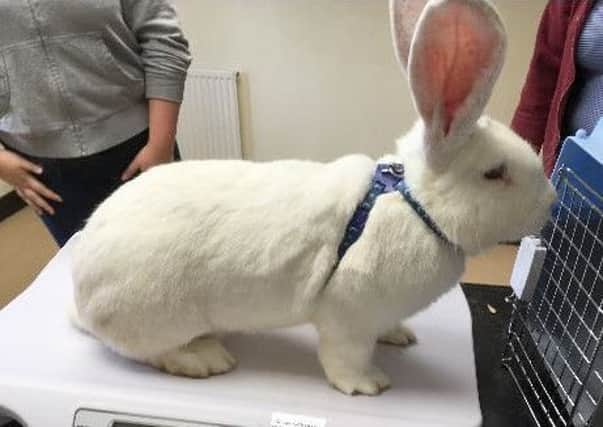Julian Norton: Getting the balance right with rabbits


He had come to the practice with another very large rabbit called ‘Thumper’, who was his companion. The supersized lagomorphs were an awesome-looking pair. They were not poorly – they just needed their annual health and weight checks, and to be given their annual vaccinations.
We routinely vaccinate rabbits against two diseases. The most well known is myxomatosis – a horrible disease, that causes a slow and lingering death, with characteristic painful swelling up of the eyes and genitals.
Advertisement
Hide AdAdvertisement
Hide AdSo contagious is the disease, that it was introduced to Australia in the 1950s, in an attempt to decimate the wild rabbit population that was displacing the native wildlife. More recently, we have started to vaccinate against a second fatal condition called Rabbit Viral Haemorrhagic Disease.


Infection with the VHD virus causes sudden death. Both diseases are rife in the wild rabbit population, so it is crucial, especially in rural areas, that pet rabbits are vaccinated every year to keep them safe.
Just as important for health of a rabbit is the maintenance of a normal weight and the provision of a suitable diet. We see increasing numbers of overweight rabbits these days, and the associated problems – from a failure to be able to groom properly, to diabetes and urinary tract disease – can all be prevented through dietary management.
Research done some years ago by Yorkshire veterinary surgeon, Francis Harcourt-Brown, demonstrated pet rabbits often have much lower bone density than their wild, grass-eating cousins. This weaker bone is a particular problem in the skull, leading to loosening of the teeth and, as a consequence, an increased risk of dental disease and, in particular, abscesses associated with the tooth roots. This syndrome is seen most commonly in rabbits fed on muesli style foods. Whilst the whole diet has the correct balance of minerals, rabbits are highly selective feeders and only eat the tasty morsels, leaving the more nutritious bits in the bowl.
Advertisement
Hide AdAdvertisement
Hide AdThe very best diet for a rabbit is grass and hay (good quality feeding hay as opposed to bedding hay, which is often dusty and less palatable) with the addition of a small amount of a complete pelleted food, which gets round the problem of selective grazing. The long fibres in grass and hay are crucial both for even wear of the teeth and for healthy gut function.


Occasional treats such as mint, basil or parsley and small branches from an apple or pear tree, complete with leaves make your rabbit’s diet perfect.
Thumper hopped on to the scales first. He passed the weight test with flying colours. He was large and robust but not overweight. I peered into his mouth with my ’scope. His back teeth – the molars – were healthy, with uniform wear and no sharp spurs. His front teeth – the incisors – aligned perfectly with no need for any attention either.
Next we discussed the rabbits’ home environment. Stimulating surroundings, to keep a rabbit’s mental health robust are just as important as what goes into its food bowl.
Tubes to play in, different levels to explore and an outside run all contribute to a contented life. But Thumper and Blue had everything they needed. Most important of all, they had each other!